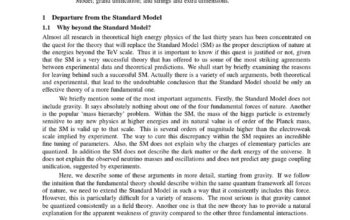In the cosmic expanse that encompasses myriad celestial bodies, the possibility of extraterrestrial life has tantalized humanity for centuries. While telescope technology has advanced remarkably, enabling the discovery of exoplanets, the hunt for life beyond Earth often hinges on our ability to glean information from these distant worlds. One intriguing phenomenon, known as “earthshine,” may serve as a potent tool in this pursuit, shining light on the potential for life in the far reaches of the universe.
Earthshine occurs when sunlight reflects off Earth’s surface and illuminates the darker side of the Moon, providing a subtle yet beautiful glow. This effect is especially noticeable during the crescent phase, where the illuminated portion of the Moon is juxtaposed against its shadowed expanse. Earthshine is not merely a picturesque sight; it signifies a complex interplay of light and atmospheric conditions on our planet. Understanding this interplay could enhance our methods for identifying biosignatures on exoplanets, particularly those situated in the habitable zones of their respective stars.
The unique appeal of earthshine lies in its ability to present us with a mirror—albeit a cosmic one—that reflects our home planet’s qualities. This optical phenomenon underscores the potential for life-supporting conditions elsewhere in the universe. Just as earthshine enables the observation of features on the Moon that would otherwise remain obscured, it suggests that similar reflections from distant exoplanets might reveal crucial data about their atmospheres and surfaces. By analyzing the light reflected from these worlds, scientists may uncover vital clues about habitability and the existence of life.
To decode the mysteries that light might reveal, it is essential to engage with the concept of spectral analysis. This technique allows researchers to dissect the light emitted or reflected by celestial bodies into its constituent wavelengths. Each wavelength carries unique information about the chemical composition and physical properties of a planet’s atmosphere. As we study the spectrum of light that reaches us from an exoplanet, we may identify signatures indicative of biological activity, such as the presence of oxygen, methane, and water vapor—elements that combine to create the delicate tapestry of life on Earth.
In recent years, technological advancements have spawned a deeper understanding of the atmospheric dynamics of exoplanets. Telescopes equipped with high-precision spectrographs are capable of capturing the minutiae of light that permeates through the atmospheres of these distant worlds. By observing the transient glimmer of earthshine in cosmic mirrors, researchers can look for variations in the light caused by the presence of elements or compounds that hint at biological processes. Such an endeavor exceeds the mere contemplation of starry skies; it ventures into the realm of astrobiology, forcing us to reconsider our definitions of life and habitability.
Moreover, the significance of earthshine takes on additional layers when juxtaposed against the backdrop of exoplanet diversity. The discovery of exoplanets rich in water, or those orbiting within the habitable zones of their stars, raises pressing questions about the conditions necessary for life to flourish. Earthshine offers a unique vantage point from which we might extrapolate the potential for life on these worlds. Just as our Moon bears the scars of meteor impacts and the gentle caress of solar winds, so might other moons and planets reflect their own unique histories. By investigating the earthshine of these celestial bodies, we gain insight into not only their current conditions but also their formative journeys through time and space.
The implications of utilizing earthshine do not end with the analysis of chemical signatures. The phenomenon also highlights the importance of planetary atmospheres in regulating temperature, protecting against harmful radiation, and facilitating the cycling of vital nutrients. Understanding how light interacts with an exoplanet’s atmosphere could inform us about the potential for sustaining life. In this respect, earthshine serves as a metaphorical lens, magnifying our perspective on the complex interdependencies that give rise to habitable conditions.
As the scientific community continues to unravel the enigma of exoplanets, the potential applications of earthshine extend further into the realm of exoplanetary science. Researchers are also exploring the role of advanced imaging techniques, including direct imaging, to elucidate the characteristics of exoplanets through the study of their reflected light. Techniques such as nulling interferometry, where light from a star is minimized to capture the faint gleam of a planet, may enhance our ability to attribute characteristics of habitability based on reflected light. Such advancements herald a new era of astrobiological exploration, wherein the twinkle of distant worlds could become a beacon of hope for understanding life’s origins beyond Earth.
In conclusion, the phenomenon of earthshine serves as a delicate reminder of our interconnectedness with the cosmos. It allure not only enhances the aesthetic appreciation of the night sky but also fosters groundbreaking scientific explorations. As we explore the pathways illuminated by this celestial reflection, we could edge closer to deciphering the enigma of life beyond our planet. Earthshine, an ethereal light that dances between the worlds, beckons curiosity and inspires the relentless quest for cosmic companions in the vast extraterrestrial tapestry of existence.












